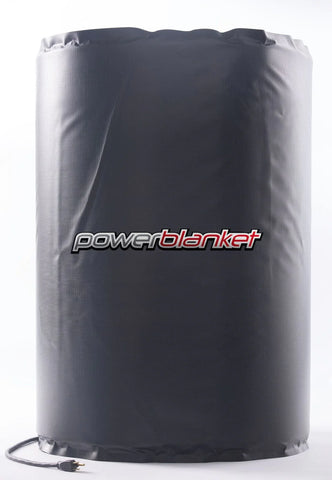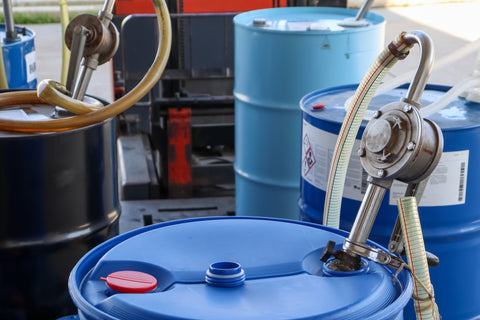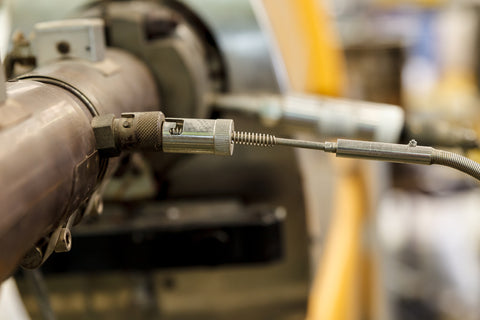The Crucial Role of 55-Gallon Drums in Industries and the Need for Heat ResilienceH2: Introduction
55-gallon drums have become a staple in various industries for storage, transport, and even as equipment in some applications. From the oil and gas sector to the food and beverage industry, these drums provide a versatile solution for many needs. Whether filled with drinking water, liquid materials, or other substances, understanding the heat resilience of these drums is crucial. Their heat resistance ensures the safety and quality of the contents, especially in environments with varying temperatures. Whether you're using a plastic drum or its steel counterpart, the question remains: how hot can these drums withstand?
Plastic 55-Gallon Drums
Overview of Plastic Drums

Polyethylene is the primary material for most plastic drums, frequently used in sectors requiring FDA-approved storage solutions. Their popularity stems not just from regulatory compliance but also from their cost-effectiveness and recyclability. They offer a combination of characteristics that are advantageous, including their lightweight nature, resistance to some chemicals, and ease of transportation. While they might not be as durable as steel drums in some scenarios, their utility in specific industries cannot be understated.
What Level of Heat Can Drums Withstand?
When you ask, "how hot can plastic 55 gallon drums withstand?", the answer varies, but it's a critical question, especially when considering the storage or transport of temperature-sensitive contents. Polyethylene, the primary material for most plastic drums, starts to soften around 80-100°C, which means they might not be suitable for extremely high-temperature environments. Factors like thickness, insulation, and the presence of any stored liquid play a role in their heat resilience. For instance, storing hot water in a plastic drum might make it warmer, impacting the quality and safety of the water. Using equipment like a drum heater can also regulate temperature, ensuring the contents remain within a safe and optimal range.
Steel 55-Gallon Drums
Basics of Steel Drums

Steel drums, often referred to as metal drums in some contexts, are commonly chosen for their robustness and ability to store materials that might react with plastics, such as certain chemicals or high-viscosity liquids. Their durability and resistance to puncture make them ideal for challenging environments or when pressure variations might be a concern. Metal drums have the added advantage of superior heat transfer, making them an ideal choice for applications where temperature regulation is crucial, especially when using them in tandem with a system like a solar system or another heat source to maintain desired temperatures.
At What Temperature Will a Steel 55-Gallon Barrel Melt?
Steel, unlike some other materials, starts to melt at temperatures around 1,370°C to 1,540°C. However, in real-world applications, it's essential to understand that a steel drum might not withstand temperatures anywhere near its melting point. Factors such as pressure inside the drum, external heat sources, or even the use of equipment like a drum heater can influence its heat resilience. Additionally, the content it holds, be it drinking water, flammable liquids, or materials for freeze protection, will have its own temperature limits and can affect the drum's structural integrity.
Comparing Plastic and Steel Drums in High-Temperature Scenarios
Plastic drums, made primarily from polyethylene, while efficient for many applications such as storing drinking water or other FDA-approved contents, might not be ideal when exposed to extremely hot conditions. They might require more precise temperature control measures to maintain the quality of stored materials. On the other hand, with their inherent characteristics, steel drums can handle higher temperatures and are often used in systems where heating or maintaining a certain temperature is essential. However, it's not just about the drum itself. The content, whether it's drinking water, a viscous liquid requiring viscosity control, or any other material like sand or moisture-sensitive substances, affects the drum's heat resilience. For instance, equipment like a wood boiler or a solar system might necessitate steel drums due to the high temperatures involved, providing an efficient heat transfer mechanism.
The Role of Barrel and Drum Heating Jackets and Wraps in Precise Temperature Control
In many industrial applications, maintaining a specific temperature within drums is not just a luxury but a necessity. This is where barrel and drum heating jackets and wraps come into play. These specially designed equipment pieces function as external insulation and heating solutions, wrapping around the drum or barrel to provide uniform heating.
Crafted from durable materials, these heating jackets and wraps are embedded with heating elements that evenly distribute heat across the drum's surface. But it's not just about heating; it's about precision. Many of these jackets come with integrated thermostats or can be connected to external temperature control systems. These allow users to set a specific temperature, ensuring the contents of the drum are kept at the desired warmth.

One of the primary concerns when using external heating solutions might be the risk of overheating or damaging the drum, especially plastic ones. However, with advancements in technology, many of these heating jackets and wraps now come with precision temperature control options. This means that they can regulate the heat output in real time, ensuring that they never reach temperatures that might be detrimental to the drum material or its contents. Whether the drum contains sensitive materials like drinking water or chemicals that require specific viscosity control, these heating solutions ensure optimal conditions are maintained without compromising safety.
Furthermore, some advanced drum heaters offer connectivity to broader system controls in scenarios where continuous monitoring is essential, allowing for real-time adjustments and monitoring. This level of precision ensures that drums, whether made of plastic, steel, or other materials, remain undamaged and stay within the desired temperature range.
Ensuring Safety and Efficiency Through Understanding Heat Resilience
Understanding the heat resilience of 55-gallon drums, whether made of polyethylene plastic or robust steel, is essential for safety and optimal performance. This knowledge ensures that materials, from drinking water to volatile chemicals, are stored under integrity and quality conditions. It's not just about the temperature a drum can withstand but also the interplay of various factors. The surrounding states, such as direct sunlight or wind exposure, can influence internal temperatures. Equipment, like a heater for the drum with a thermostat, can play a pivotal role in regulating and maintaining desired temperatures. Furthermore, the thickness and insulation properties of the drum, combined with the nature of the stored material – whether it requires freeze protection, viscosity control, or other special considerations – all contribute to the drum's overall heat resilience. By paying heed to these factors, industries can ensure both the longevity of the drums and the safety of their contents.







